The Discipline of Innovation: Approaching Planning Differently

World mission is not immune to the massive changes that are happening in our world today. In response to those changes, we see local churches engaging in mission overseas, bypassing mission agencies in the process. Churches (knowingly or unknowingly) recognized the gap between those massive changes and what is happening in missions today and simply stepped in. Most every mission leader I know admits to feeling that new pressures are emerging.
People’s giving patterns are changing. Young missionaries have different motivations than the previous generation. The mission field itself has changed. Strategic drift is keeping us from being as effective as we could be.
What does this teach us? It shows us that those who align themselves with the future are consistently better prepared. They stay ahead of the curve by having strategies in place by the time the future arrives. It’s driven by an insatiable curiosity that seeks to understand the changes happening around us; changes which others miss (Oster 2011). The more we understand these changes, the better we are at finding creative solutions we can begin implementing today.
It is not easy to do so. Our brains are hard-wired to identify familiar patterns. Pattern recognition is geared to recognizing that which has remained the same. This helps us recognize faces, learn languages, and remember where we placed our car keys. But this also hinders us from recognizing change. As a result, we ignore the important cues, that change happened faster than we realized (Hannagan 2009).
Further complicating matters, the projects we manage and the organizations we lead have inertia; individuals and finance are invested in current plans. Assuming we even fully recognized a change, we still have to convince others of its existence, then agree upon how to react. Such discussions are often held off for annual reviews, where, because there are other expedient issues needing to be discussed, any big changes simply fall off the table. Consequently, we react even slower still. Organizations are designed for stability.
With our brain’s inherent biases against change, corrective steps usually fall short of what’s actually needed (Hannagan, 2009). This results in small, but growing gaps between what we do and what needs to be done. To make matters worse, these corrections are generally reactive, rather than proactive in nature. This means we’re constantly trailing behind while change gains an increasing lead. Hannagan calls this widening gap “strategic drift.”
Strategic drift eventually increases to the point that the gaps become vast chasms. Because drift is so gradual, most organizations don’t realize the resulting chasm until it’s too late. It’s the classic boiling frog syndrome.
So, how do we recognize and fill the chasm? How do we choose the right actions amid such uncertainty?
Innovation
Peter Drucker said, “In a time of rapid change, the opportunities for improving, for getting results, are also changing rapidly. Things that were impossible or unnecessary yesterday suddenly become possible, and things that made great sense yesterday no longer make sense . . . One of the tasks of leaders is to make sure that we constantly put our scarce resources Considering multiple new future scenarios, we prayerfully explored the kind of future we wanted to emerge after the pandemic. This allowed us to take a proactive approach to the lockdowns, looking for the forces we have control over, and what other forces we can actively influence.
Now, even as life slowly returns to the “old normal,” many of our workers no longer want to engage the way they always have. They see new options to engage with greater influence. Through changing their view of the future, they’ve changed how they engage with the present.
In the end, that’s what innovation is all about.(people and money) where they do the most good… . Good intentions are no longer enough” (Hesselbein & Cohen 1999).
It might surprise you, but Peter was writing to leaders of a non-profit volunteer organization, helping underprivileged inner-city youth. He was helping the organization find the actions which would have the greatest impact on literacy and graduation. Knowing this, you may want to read that passage again.
He continues, “What we have really done is learn the discipline of innovation…It means being able and willing to abandon efforts that don’t get results—either because we don’t know how to produce results or because we are misdirecting our efforts…It’s not looking at need alone, but looking at need and opportunity…We need the discipline of innovation because in a rapidly changing society, our problems are changing” (Hesselbein & Cohen 1999).
If we enact new strategies designed to deal with changes that we recognize today, and have already happened (past tense), we simply align our organizations to the past. See the fundamental flaw? Yet, this is what most planning methodologies produce.
The most common planning tool, the SWOT analysis (Strength, Weakness, Opportunity, Threat), does nothing to envision the future, track emerging trends, analyze their interactions and explore the new horizons of tomorrow. SWOT and most planning processes merely create incremental changes in strategy, when in reality, we have to jump the chasm and get ahead of strategic drift.
A better way forward is scenario planning. It comprises a set of tools which, since the 1970s, are now becoming mission- critical business processes to most corporations and are taught in the business institutes of Ivy League schools. The traditional strategic plan is out. Scenario planning has become the practice of many of the world’s largest companies. Instead of predicting “the” future which will emerge, it’s more advantageous to think of the future in the plural, as an array of plausible futures (Hines & Bishop 2006). This helps us position ourselves favorably within a variety of different future scenarios.
A weather forecaster looks at various weather patterns and how they will interact; then a forecast is developed for the next few days and weeks (2006). As weather trends develop and change, the forecaster updates his forecast to match new emerging information. Over time, the weather forecaster develops his skills and begins to understand to which types of information he must play close attention.
Predictions are precise, exact statements about what the future will be. Forecasts, however, provide just enough meaningful information to help us make better decisions about our day: should I take an umbrella, should I delay my beach vacation, or should I buy a snowblower?
Scenario planning thinks about the future in terms of forecasting multiple scenarios. We track various trends and events impacting the environment surrounding our ministries in order to paint various probable scenarios impacting the future of our ministry. Forecasts give us information about the future that empowers us to take meaningful action in the uncertainty of today (Saffo 2007).
In the process of exploring these scenarios, we learn that there are ways we can create meaningful dialogue and influence the future as it emerges (2006). A good scenario simply helps us think about the future in a way that helps us become like the leaders of Issachar, understanding the times and knowing what to do as a result. This recent pandemic has been a perfect example of why scenario planning is so important.
Certainly life returning to “normal” was one potential scenario. In this scenario we could all plan for when borders would open up, and we could get back to our respective ministries. But other scenarios begged the question, “What if life doesn’t return to ‘normal’?”
Considering all the global forces converging upon this pandemic (political changes, technical abilities, global missions trends, indigenous church trends, etc.), allowed us to imagine several new scenarios highlighting what “might” emerge. Suddenly, a return to the “old normal,” didn’t seem as plausible as it once did.
Very early on, we used the time to retrain many of our teams. We helped them see lockdowns not as a restraint, but a gift to re-evaluate their work. The goal was to change their perspective from an “inside worker” to an “outside catalyst.”
Considering multiple new future scenarios, we prayerfully explored the kind of future we wanted to emerge after the pandemic. This allowed us to take a proactive approach to the lockdowns, looking for the forces we have control over, and what other forces we can actively influence.
Now, even as life slowly returns to the “old normal,” many of our workers no longer want to engage the way they always have. They see new options to engage with greater influence. Through changing their view of the future, they’ve changed how they engage with the present.
In the end, that’s what innovation is all about.


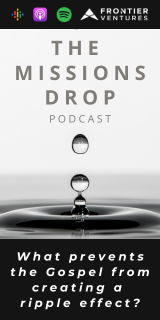
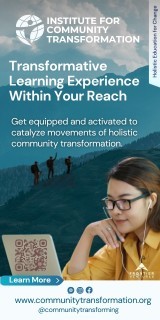
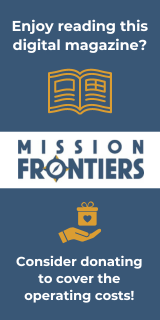
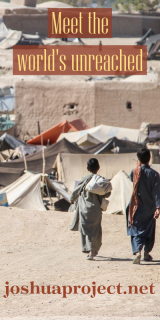
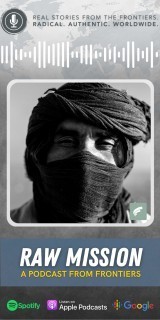
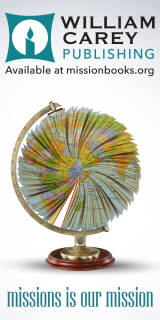
comments